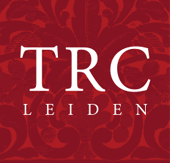It can be difficult at times to precisely identify an object as a loom weight. Similarly shaped stone or clay objects, with perforations, might have been used as weights for roof thatching, supports for fire spits, spindle whorls, net sinkers for fishing nets (Barber 1991:97) or bellow shields (In Scandinavian archaeology, loom weights have sometimes been misidentified as bellow shields. See Thorin 2012:4). Looking at the archaeological context of the object is important for its identification. Support for roasting spits may have fire marks, while net sinkers might be found in or near an ancient lake or river, or in the remains of a boat.
Loom weights are commonly found in clusters or in two or more parallel rows, or near post holes where the loom’s uprights were placed. There may also be characteristic wear marks or grooves that point to the object’s use as a loom weight. Other indicators might be the nearby remains of other textile tools (spindle whorls, beaters, bobbins, heddle rods, etc.) or remnants of textiles themselves. Identification depends on the excavator’s interpretation, which can be subject to human error.
Loom weights are a common archaeological find in Greece and elsewhere. The ancient Greek textile tools found in the TRC collection originated from different sites. The two spindle whorls (TRC 2014.0802 and TRC 2014.0803) were found at Perakhora; the dumb-bell shaped bobbin (TRC 2014.0797) and bobbin fragment (TRC 2014.0798) were found at Argos. Loom weights TRC 2014.0789 and TRC 2014.0794 were found at Orkhomenos. Other loom weights were found at Dikte and at Chios. Sadly the find sites for several of the other weights in the TRC collection were not recorded.

